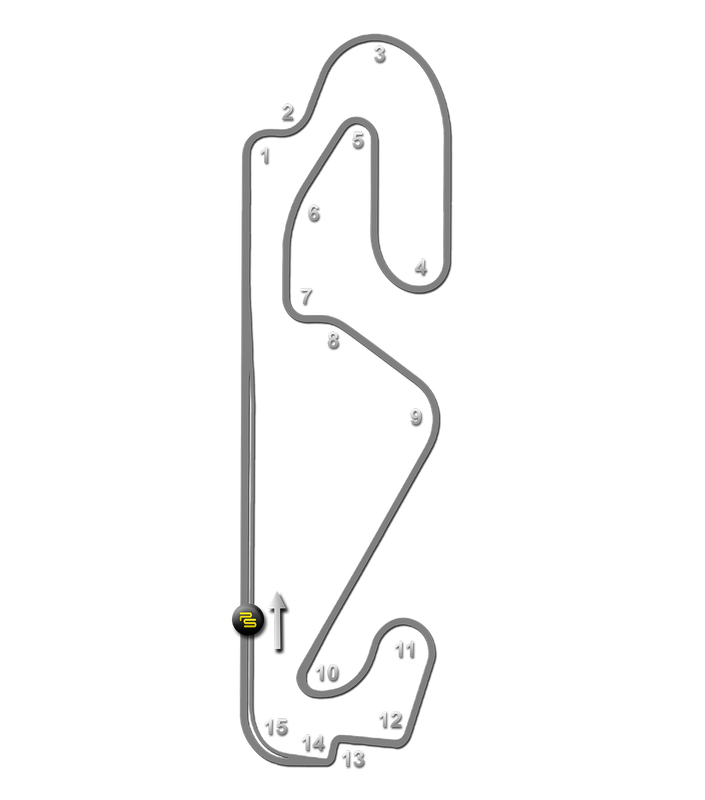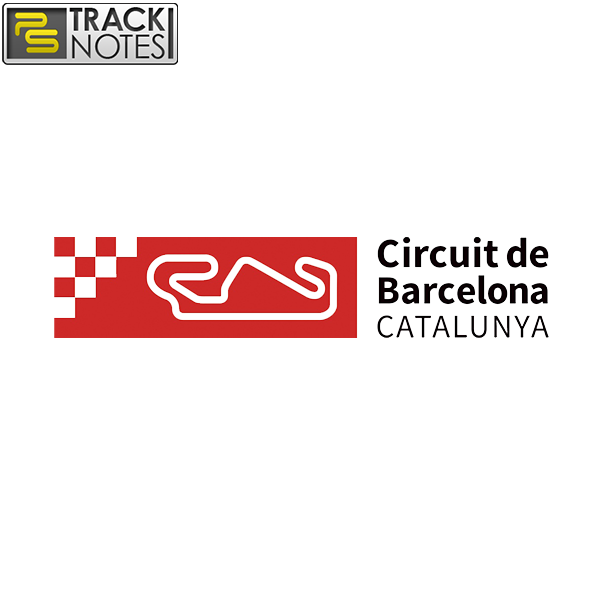- Store home
- >
- Track Notes
- >
- Hard copy + digital
- >
- Circuit de Barcelona-Catalunya Track Notes (hard copy + digital)
Circuit de Barcelona-Catalunya Track Notes (hard copy + digital)
SKU:
$9.95
$9.95
Unavailable
per item
- Full track break-down using the principles taught in the Science of Speed Series.
- Bonus "Corner Close-Up" on the reverse for extra in-depth analysis of the most difficult and complex section.
- Includes a laminated, double-sided hard copy as well as a digital copy.
- Try out Track Notes for FREE by clicking here.
Circuit de Barcelona-Catalunya Track Guide & Map

The Circuit de Barcelona-Catalunya (as it became known in September 2013) is one of Europe's busiest tracks, playing host to high profile rounds of Formula One, MotoGP and becoming the seasonal winter home of the F1 teams as they test their new cars and drivers.
Plans for the circuit were first suggested in the mid-80s, with the Catalan government keen to pry the grand prix away from Jerez and return racing to Barcelona for the first time since the 1970s, when the fabled Montjuic Park course was last used. A plot of land north of Barcelona, near to the town of Montmeló, was secured and the foundation stone was laid in February 1989.
Construction continued through 1990 and into 1991, with the completed course ready for its first event, a round of the Spanish Touring Car Championship, on 10th September 1991. Former F1 driver Luís Pérez-Sala took the victory. Two weeks later came the Formula One Spanish Grand Prix, featuring a memorable duel between Mansell and Senna down the front straight. The Motorcycle Grand Prix followed on a month later.
The circuit features a mix of fast and slow corners, a long straight and a variety of elevation changes. As a result, it is a popular testing venue, aided by the usual pleasant winter weather. Spectator facilities, which have always been good, were boosted further in 2002 with the opening of a new main grandstand, designed by Hermann Tilke and with a capacity of 9,580. Opposite, a gigantic electronic scoring board now also dominates the end of the pit lane.
Over the years, a number of circuit revisions have been made. In 1994, following the tragedies at Imola, the F1 drivers were critical of the lack of run off at the end of the fast Nissan chicane, and an ungainly additional chicane was hastily built out of tire stacks. Possibly one of the worst additions to a track ever, it did at least allow for the race to go ahead.
The following year, the Nissan chicane was bypassed altogether, the track continuing in a straight line from Campsa down to La Caixa. The original chicane remains, though it is now rarely used, with even the national course bypassing it in recent years.
Although designed with F1 in mind, the increasing reliance of modern grand prix on aerodynamic grip lead to a number of dull, processional races as the drivers found it hard to overtake. In particular, following a competitor close enough through the final curve to gain a slipstream down the main straight became virtually impossible. To add an additional overtaking spot, La Caixa was tightened in 2004, and in 2007 a clumsy chicane was inserted at the penultimate corner. It has done little to improve the overtaking, but it has slowed the cars through the final curve.
Happily, without the aerodynamic constraints of the F1 cars, the motorcycle course remained largely unchanged for a few more years and witnessed some thrilling racing. As if to emphasize the point that overtaking is much easier on two wheels, Valentino Rossi pulled off a spectacular last-lap dive on Jorge Lorenzo in the final turn of the 2009 race to deny the Spaniard a home victory.
Eventually, even the pace of development on two wheels meant that speeds began to outstrip safety. This was tragically proved during practice for the 2016 Moto2 race, when Luis Salom crashed at Turn 12. The air fence sent the bike in the air and into the path of the hapless rider, who died a short time later from his injuries. As a result of his death, the race used the layout normally used by Formula One, to reduce speeds in the part of the track where Salom had crashed.
During January 2017, the track underwent some modifications to create a more suitable chicane for the motorcycles at the behest of the FIM. The revised course also continues to use the Formula 1 layout at the CaixaBank turn, leaving the original corner layout largely redundant, as is the original Europcar turn, which is now bypassed by all racing categories in favor of the earlier turn for the chicanes.
Plans for the circuit were first suggested in the mid-80s, with the Catalan government keen to pry the grand prix away from Jerez and return racing to Barcelona for the first time since the 1970s, when the fabled Montjuic Park course was last used. A plot of land north of Barcelona, near to the town of Montmeló, was secured and the foundation stone was laid in February 1989.
Construction continued through 1990 and into 1991, with the completed course ready for its first event, a round of the Spanish Touring Car Championship, on 10th September 1991. Former F1 driver Luís Pérez-Sala took the victory. Two weeks later came the Formula One Spanish Grand Prix, featuring a memorable duel between Mansell and Senna down the front straight. The Motorcycle Grand Prix followed on a month later.
The circuit features a mix of fast and slow corners, a long straight and a variety of elevation changes. As a result, it is a popular testing venue, aided by the usual pleasant winter weather. Spectator facilities, which have always been good, were boosted further in 2002 with the opening of a new main grandstand, designed by Hermann Tilke and with a capacity of 9,580. Opposite, a gigantic electronic scoring board now also dominates the end of the pit lane.
Over the years, a number of circuit revisions have been made. In 1994, following the tragedies at Imola, the F1 drivers were critical of the lack of run off at the end of the fast Nissan chicane, and an ungainly additional chicane was hastily built out of tire stacks. Possibly one of the worst additions to a track ever, it did at least allow for the race to go ahead.
The following year, the Nissan chicane was bypassed altogether, the track continuing in a straight line from Campsa down to La Caixa. The original chicane remains, though it is now rarely used, with even the national course bypassing it in recent years.
Although designed with F1 in mind, the increasing reliance of modern grand prix on aerodynamic grip lead to a number of dull, processional races as the drivers found it hard to overtake. In particular, following a competitor close enough through the final curve to gain a slipstream down the main straight became virtually impossible. To add an additional overtaking spot, La Caixa was tightened in 2004, and in 2007 a clumsy chicane was inserted at the penultimate corner. It has done little to improve the overtaking, but it has slowed the cars through the final curve.
Happily, without the aerodynamic constraints of the F1 cars, the motorcycle course remained largely unchanged for a few more years and witnessed some thrilling racing. As if to emphasize the point that overtaking is much easier on two wheels, Valentino Rossi pulled off a spectacular last-lap dive on Jorge Lorenzo in the final turn of the 2009 race to deny the Spaniard a home victory.
Eventually, even the pace of development on two wheels meant that speeds began to outstrip safety. This was tragically proved during practice for the 2016 Moto2 race, when Luis Salom crashed at Turn 12. The air fence sent the bike in the air and into the path of the hapless rider, who died a short time later from his injuries. As a result of his death, the race used the layout normally used by Formula One, to reduce speeds in the part of the track where Salom had crashed.
During January 2017, the track underwent some modifications to create a more suitable chicane for the motorcycles at the behest of the FIM. The revised course also continues to use the Formula 1 layout at the CaixaBank turn, leaving the original corner layout largely redundant, as is the original Europcar turn, which is now bypassed by all racing categories in favor of the earlier turn for the chicanes.


